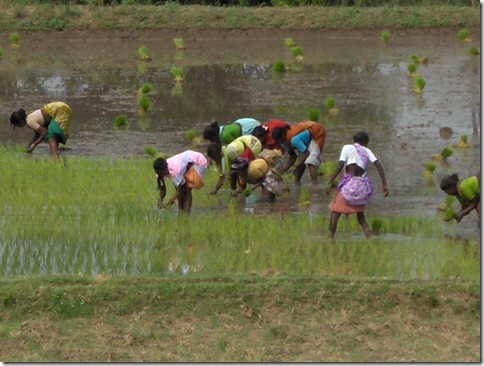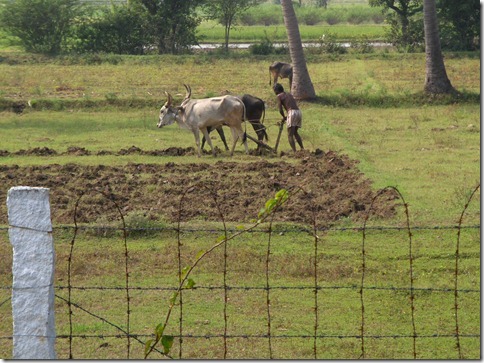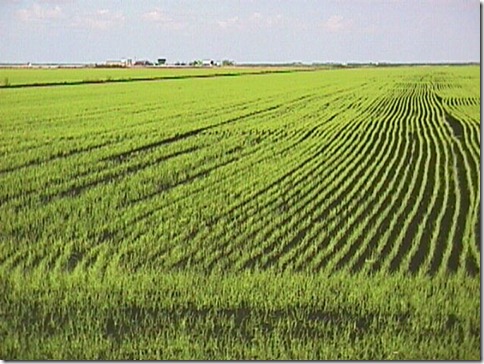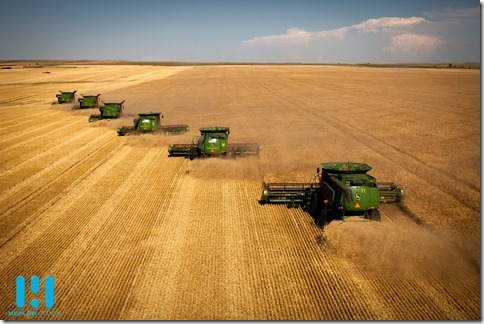
Tamil Nadu - Arunachala Mountain
Ante Scriptum: "Caro Paolo, t'invio questo articolo di carattere bioregionale, dell'amico Richard, veramente toccante. Sarà interessante poterlo pubblicare sul blog del Bioregionalismo, se vuoi, perché adatto all'argomento trattato. Richard ci narra, per esperienza personale, la scomparsa di piccoli villaggi dediti da lunghi anni all'agricoltura e fa un paragone con la sua terra nativa l'Oklaoma, in cui si viveva come in questi villaggi e come è diventata oggi. Avranno le nuove generazioni un 'buon' posto in cui vivere? Un abbraccio, Simona"
Tamil Villages – The Ancient Spiritual Heart of Tamil Nadu
The Tamils are an ancient people, called by the BBC, “The oldest living classical civilization.” We have shown village traditions that include gods, goddesses, and guardians that were here before the Brahmanist Vedic Hindu ideas and culture arrived in South India, more than 2000 years ago. We have also looked at some ancient family traditions, including a series of rites of passage over the life of each person in the village that give each person a clear idea of their family and their own place within this family.
This village and family structure are linked to another ancient tradition, that of the Tamil joint family farm, where many generations of the family live under one roof, share food, and together work the farm. All the male members of this joint family are blood relatives, and all the women are either mothers, wives, unmarried daughters, or widowed relatives. They are all together in this joint family. There farms are usually pretty small, and are near to the village.
You can see people today using the same farming methods. Below is a photo of women planting rice, taken from our home near Tiruvannamalai.
A man plowing behind a bullock, also taken from our home.
This farm life has not changed much since the introduction of iron, more than 2,000 years ago, though now you will see some farm machines in use: tractors, often small, and rice harvesters. Change has started to come to these villages as India moves into her place in the modern world. I feel that the culture in these villages today is a precious human and cultural resource for the world, and needs to be preserved, recorded, protected and nourished. Lessons learned from this culture need to be shared with other developing countries around the world who have the capability to preserve their own native family farms and farming families.
Change is happening now in Tamil Villages
In the almost 70 years since Indian self-government began with the expulsion of the British, changes have been happening at a significant pace in these villages.
They include:
- Public school, where children are removed from the family for education, and taught about India and the world.
- Family Planning, leading to a reduction in the number of children. This change has been rapid, and has decreased the number of children per woman in Tamil Nadu by more than half. So this generation of children is relatively much smaller than the families at the time of Independence.
- “Green Revolution” agriculture, with purchased seeds and chemicals. Farming methods, which were unchanged for two millennia, underwent a big change in the 1960s with the “Green Revolution.” The Green Revolution improved farm productivity, but at a dire cost. The cost was for farm chemicals – chemical fertilizers and weed suppressants, and special seeds that did well under this chemical regime. Where before a farmer could start the new season and use seeds he had saved, now each year’s crop has to be financed, borrowing money for the chemicals and seeds that must be purchased. This changes farming, and introduces a financial risk that is ruinous to farmers during bad years, when the debt cannot be repaid. It also has introduced chemicals into the environment that are not healthy for humans and other animals.
- Electricity and TV have been brought into most villages now. While having an electric light by which the children can study helps their education, when the children see life beyond the village and are subjected to advertising that makes them want these things, this can pull them away from the village and family.A common site is this village house with satellite TV antenna.
- Mobile Phones are in pretty much every village now. These bring modernity closer to every village.
- Movement into cities for economic reasons has been draining the life out of the village as sons (and daughters) move to the city to find work and “make a better life” for themselves. The villages are already facing a smaller generation of children, and many of the next generation leave for the city. Family ties remain when they move to the city, but they are weaker, and the traditional life of the family is limited.
- Abandonment of elders, due to children moving to cities and other family problems, such as alcoholism, has become a big issue in villages. The oldest son of the family is supposed to take care of his parents when they get old. But what happens when he moves away, or if he is an alcoholic, or they do not have a son (in their smaller family)? We see old people living on the street because of this. This is widespread.
- Two new challenges will add further risks
- Smart Phones are bringing the Internet to the young people of the world. It is particularly hard for them to resist that allure of video and of relationship systems, like Facebook. The costs for these phones is dropping fast, and as they arrive in the villages, they bring the attention of the young people out of the village, into cities, “where everything is happening.”
- Global Warming brings further risk, with pressure from changing weather and rising oceans. It is not clear to me how this will affect farming in South India. There is already great pressure on water systems, where wells must be dug much deeper due to falling water tables. Agriculture as currently practiced uses about 70% of the available water, with human and manufacturing use comprising the other 30%. What affect Global Warming will have in South India, I have no idea.
Can the Tamil heritage be protected?
In the USA, the farm houses and villages from my own childhood have vanished. My grandfather was a farmer in Oklahoma. He survived the Oklahoma “Dustbowl” of the 1930s, and when I visited him in the late 1940s he lived in a big farm house, in a situation not unlike the Tamil farmer’s family. He lived there also with some of his children and grandchildren. He had farmworkers who lived on his farm, too. I moved from Oklahoma to California as a child in 1953. When I returned to Oklahoma in the 1980s I tried to visit the old farm. When I got to the place there was no house. All the trees had been cleared. There was only farmland from horizon to horizon, cleared of all obstacles that might slow down the farm machines. The farm machines did most of the work, so they did not need all the people to farm the land. Where are all the families now? The families were the life of the country when I was a boy. Now they have vanished in many places in America, This can happen in Tamil Nadu, too. All it takes is for businesses or large land owners to take over farming, and and “invest” in “Green Revolution” farming and to invest money in farm machines to replace the farmworkers. Then the quality of the food gets worse, and life in the villages becomes even harder, and more children who will become the next generation move away to the city. The family pretty much dies as the functioning unit, and as the families die, so does the village.
Here is a photo of farmland that this typical of that seen in much of the USA now: (from nicholsonrealtyfarms.com)
Where are the people? Where are the families?
I have made the case in these articles that Tamil culture and an ancient way of life is preserved in Tamil villages. This way of life brought with it a culture that has withstood the test of two thousand years, and produced many generations of people who feel good about themselves, and live with a deep kind of personal emotional security, always knowing their place in the world. This kind of personal emotional security is something that has been largely lost in many places in the world. It certainly is no longer there in my homeland in America.
In America, the families are much more fragmented; the result of generations of moving to the new places of opportunity (usually leaving much of their family behind). In the American situation, traditions have died, families are weaker, and there is a kind of personal insecurity faced by many people. This personal insecurity is different from what is felt by the children of Tamil villages. Tamil children face physical insecurity due to deep poverty, but their personal security is enough that you usually see their smiling, happy faces. This is not nearly so much the case with children in the USA.
Again, this could be what is in store of Tamil Nadu. This is a picture of harvesting the wheat crop now in much of the USA (from heplerphoto.com):
A harvesting team of men and equipment starts working in the spring in the Southern areas of the wheat-growing areas of the USA central plains, like in Oklahoma. The team works its way north, harvesting wheat as it ripens as they go farther and farther north, finally into Canada.
This “agribusiness farming” is a high user of investment capital, petrochemicals (gas and oil), and agricultural chemicals (fertilizers, insecticides and herbicides). In most places it is also the main user of water supplies. In India about half of all water goes to support justrice farming, alone. This kind of farming also is not good for the soil, and over the long time depletes it to where it may no longer be viable for farming – unless even more chemicals are used.
Is this the future we want for Tamil Nadu? Tamil Nadu now has a population of about 75 million, and even though Tamil Nadu is one of the Indian states that is the most industrialized, more than half (56%) of the population lives in villages. So unless we want the Tamil Nadu cities to double in their size, we have to find ways to keep the villages alive, and as a good place for the next generation to live.
Need to study and protect Tamil villages
The need now is to study, document, publish , protect and preserve the ancient culture of the Tamil Villages. Otherwise they might become like farms in the USA.
It is important to record and catalogue Tamil village traditions. This is best done by Tamil researchers, since they have a closer ability to understand the language and traditions of the villagers. A central site updated with this research, maybe something like www.en..tamilwiki.org, could publish this material and provide access to collogues and the English speaking world.
What can be done to nourish and preserve today’s villages?
Agricultural revolution
Organic agriculture has been shown to improve the soil and to improve the crops. These approaches, such as natural composting, seed saving, and crop rotation, work to build the soil and create the natural environment to control pests. Organic agriculture produces better quality food and lowers the cost to the farmer for seeds, pesticides and fertilizers. This reduces the strain on the farmer by reducing his heed to borrow money each year to finance this year’s crops.
One example of a specific new technique of rice farming in Tamil Nadu is SRI, System of Rice (or Root), Intensification. SRI is an agro-ecological methodology for increasing the productivity of irrigated rice by changing the management of plants, soil, water and nutrients. It is proven to improve yields and profitability in Tamil farms. Here is a slide from the presentation that summarizes the key points of the now-proven SRI growing techniques:
SRI was developed in 1983 by the French Jesuit Father Henri de Laulanié in Madagascar. SRI uses less water, about half. It also uses less seed, again about half. Harvests are improved with increased yield by 10 – 100%. SRI uses less chemical fertilizer and weed-control chemicals. All of this greatly lowers cash investment for the farmer. Lower cash investment and improved yields mean improved profitability for the farmer.
Help marketing of crops
Village farmers’ co-ops are used around the world to improve the ability for small producers to join together to market crops. These co-ops share the tasks for storing, transporting and selling the crops. Combining all the village’s crop into one marketing organization gives the village much better power and ability to make agreements to sell their agricultural products.
Better roads to get fresh crops to market are key in this effort. Slow traffic is the case on roads that are too small and with unrepaired potholes and other road damage. This slow movement of fresh farm produce makes it hard to market and increases the problem with perishable items spoiling. With more than 12,000 villages in Tamil Nadu, having a good road to each village is a big task. Pressure must be applied to the Tamil Nadu state government to get this done. Current Tamil Nadu budget calls for 1364 road improvements per year. At that rate it will be a decade before the road improvement work is finished for the 12, 620 villages.
Strong laws to protect the villages
Maintain existing strong laws and ensure enforcement of these laws to protect farmland from developers and to encourage family farms in the villages.
There are three legal types of property in Tamil Nadu: Agricultural, Government, and Patta. Agricultural land is limited in use to farming. Patta can be privately owned, and the rest (including most temples, schools and hospitals) is Government land. These land rules are administered by the Tamil Nadu Revenue Department. Tamil Nadu has a strict Agricultural land holding law already, The Tamil Nadu Land Reforms (Fixation of Ceiling on Land) Act, 1961, that fixes that maximum size of a farm own by a family to 60 acres to begin with and later reduced to 30 acres. Industrial uses are restricted to 15 acres. This sounds good, but there are problems, as reported in the Times of India:
However, Section 37-A of the same act empowers the government to issue permission to industrial and commercial undertakings to hold excess land. As per Section 37-B, public trusts can apply to the government for permission to hold or acquire lands for educational or hospital purposes. It is because of these provisions that educational/medical institutions and industries hold thousands of acres of lands. (My bolding)
These problems are now in the hands of the High Court. I do not know how confident we can be in their solution. I know of a local land use issue, that of a building for an ashram built upon Government land on Arunachala where the HC ordered that it be removed and the local government was unable to execute the court order.
There is also a problem with misuse of Agricultural land. I have personally seen rental housing built on Agricultural land and rented out. This is illegal, but nothing seems to be done about it. Also there is a big issue with Agricultural land being converted to Patta, and thus to private development. I do not know for myself, but I have heard that real estate developers, with lots of money, are powerful, and can influence members of local governments to convert Agricultural land to Patta.
Conclusion
We need to realize that Tamil villages are precious. We need to understand them, document their cultural elements, and publicize our findings. We need to preserve them and protect them, and find ways to nourish them for the future. The heart of this, to me, seems like the farms. Improved farms means more children will stay in the village as adults. It is easy to choose to stay with something that is successful.
What else can be done? I have made a few recommendations, primarily to improve the agricultural success of Tamil Nadu villages. I know there are other ideas. Some groups have started sourcing crafts items from villages. Others, like the Irula (see this post), have formed their own organizations to produce and market natural healing herbs and herbal mixtures.
Who is working on these issues? Are there colleges and universities that are providing leadership on these issues? The government is deeply involved. What leadership can be provided by the government? Are there private organizations and NGOs that are involved or that should be involved? I am just a private individual, and a retired foreigner as well. Indian leadership is needed. Who will step up? What can you do? IF you are interested in this, comment to this article. Maybe we can, together, work to effect changes that will insure the survival of Tamil Nadu’s ancient traditions.
Richard Clarke
Links to the rest of the series:
Tamil Villages – The Ancient Spiritual Heart of Tamil Nadu – Part 1
Tamil Villages – The Ancient Spiritual Heart of Tamil Nadu – Part 2
Tamil Villages – The Ancient Spiritual Heart of Tamil Nadu – Part 3
Tamil Villages – The Ancient Spiritual Heart of Tamil Nadu – Part 2
Tamil Villages – The Ancient Spiritual Heart of Tamil Nadu – Part 3
References
I used the following sources to help me with information I have included in this series:
http://en.wikipedia.org/wiki/Village_deities_of_Tamil_Nadu
http://en.wikipedia.org/wiki/Mariamman
http://en.wikipedia.org/wiki/Aiyanar
http://en.wikipedia.org/wiki/Madurai_Veeran
http://en.wikipedia.org/wiki/Periyachi
http://en.wikipedia.org/wiki/Sudalai_Maadan
http://en.wikipedia.org/wiki/Muniandi
http://www.karuppar.com/blog/arul-vaaku-secrets-is-trance-real/
http://www.astroved.com/karuppasamy_rituals.aspx
http://en.wikipedia.org/wiki/Karuppu_Sami
http://www.shaktikali.net/kateriamma.htm
http://en.wikipedia.org/wiki/Sacred_groves_of_India
http://www.fao.org/docrep/005/y9882e/y9882e14.htm
http://www.ecoheritage.cpreec.org/innerpageof.php?$mFJyBfKPkE6
http://genome.cshlp.org/content/13/10/2277.full
https://genographic.nationalgeographic.com/human-journey/
http://ces.iisc.ernet.in/hpg/cesmg/peopling.html
http://sri.ciifad.cornell.edu/index.html
http://www.philtar.ac.uk/encyclopedia/hindu/ascetic/mariam.html
http://en.wikipedia.org/wiki/Genographic_Project
http://genome.cshlp.org/content/13/10/2277.full
http://www.rkmp.co.in/general-domain/history-and-evolution/history-of-rice-cultivation-in-india
http://karkanirka.org/2008/05/11/murugan1-2/
http://karkanirka.org/2008/05/11/murugan2/
http://karkanirka.org/2008/05/11/murugan3/
http://karkanirka.org/2008/05/11/murugan4/
http://murugan.org/research/zvelebil-tamil_traditions-intro.htm
http://hindu.com/thehindu/thscrip/print.pl?file=2008050353942200.htm&date=2008/05/03/&prd=th&
http://www.scribd.com/doc/75164625/Indian-Diversity-genetic-study-Metspalu-Gyaneshwer-Chaubey-et-al-AJHG-Dec-9-2011
http://appiusforum.net/indusvalley.html
http://archaeology.up.nic.in/doc/ffsi_nbdf.pdf
http://www.britannica.com/EBchecked/topic/9647/origins-of-agriculture
http://archaeology.about.com/od/iterms/qt/indus.htm http://timesofindia.indiatimes.com/home/science/Climate-change-caused-Indus-Valley-civilization-collapse/articleshow/31133369.cms
http://www.britannica.com/EBchecked/topic/286837/Indus-civilization
http://en.wikipedia.org/wiki/History_of_cotton
http://en.wikipedia.org/wiki/Indo-Aryan_peoples#Origins
http://en.wikipedia.org/wiki/Aryan_race
http://en.wiktionary.org/wiki/Transwiki:Multilingual_list_of_Indian_family_relation_names
http://www.ihsnet.org.in/HealthSystemsFactSheets/age@marriage.htm
ttps://www.census.gov/population/international/files/ib-9701.pdf
ttp://planningcommission.nic.in/reports/wrkpapers/wp_hwpaper.pdf
http://www.indiaonlinepages.com/population/tamil-nadu-population.html
http://www.tnrd.gov.in/panchayatraj_inst/village_panchayats.html
http://www.tnrd.gov.in/policynotes/R_D_and_Panch_Raj_2013_14_PNE.pdf
http://www.landreforms.tn.gov.in/LandReforms.html
http://timesofindia.indiatimes.com/city/chennai/HC-digs-deep-into-TN-land-ceiling-act/articleshow/11955194.cms
M. Amirthalingam, Sacred Groves of Tamil Nadu – A Survey, CPR Environmental Education Centre, Chennai, India, p. 191, 1998
http://en.wikipedia.org/wiki/Mariamman
http://en.wikipedia.org/wiki/Aiyanar
http://en.wikipedia.org/wiki/Madurai_Veeran
http://en.wikipedia.org/wiki/Periyachi
http://en.wikipedia.org/wiki/Sudalai_Maadan
http://en.wikipedia.org/wiki/Muniandi
http://www.karuppar.com/blog/arul-vaaku-secrets-is-trance-real/
http://www.astroved.com/karuppasamy_rituals.aspx
http://en.wikipedia.org/wiki/Karuppu_Sami
http://www.shaktikali.net/kateriamma.htm
http://en.wikipedia.org/wiki/Sacred_groves_of_India
http://www.fao.org/docrep/005/y9882e/y9882e14.htm
http://www.ecoheritage.cpreec.org/innerpageof.php?$mFJyBfKPkE6
http://genome.cshlp.org/content/13/10/2277.full
https://genographic.nationalgeographic.com/human-journey/
http://ces.iisc.ernet.in/hpg/cesmg/peopling.html
http://sri.ciifad.cornell.edu/index.html
http://www.philtar.ac.uk/encyclopedia/hindu/ascetic/mariam.html
http://en.wikipedia.org/wiki/Genographic_Project
http://genome.cshlp.org/content/13/10/2277.full
http://www.rkmp.co.in/general-domain/history-and-evolution/history-of-rice-cultivation-in-india
http://karkanirka.org/2008/05/11/murugan1-2/
http://karkanirka.org/2008/05/11/murugan2/
http://karkanirka.org/2008/05/11/murugan3/
http://karkanirka.org/2008/05/11/murugan4/
http://murugan.org/research/zvelebil-tamil_traditions-intro.htm
http://hindu.com/thehindu/thscrip/print.pl?file=2008050353942200.htm&date=2008/05/03/&prd=th&
http://www.scribd.com/doc/75164625/Indian-Diversity-genetic-study-Metspalu-Gyaneshwer-Chaubey-et-al-AJHG-Dec-9-2011
http://appiusforum.net/indusvalley.html
http://archaeology.up.nic.in/doc/ffsi_nbdf.pdf
http://www.britannica.com/EBchecked/topic/9647/origins-of-agriculture
http://archaeology.about.com/od/iterms/qt/indus.htm http://timesofindia.indiatimes.com/home/science/Climate-change-caused-Indus-Valley-civilization-collapse/articleshow/31133369.cms
http://www.britannica.com/EBchecked/topic/286837/Indus-civilization
http://en.wikipedia.org/wiki/History_of_cotton
http://en.wikipedia.org/wiki/Indo-Aryan_peoples#Origins
http://en.wikipedia.org/wiki/Aryan_race
http://en.wiktionary.org/wiki/Transwiki:Multilingual_list_of_Indian_family_relation_names
http://www.ihsnet.org.in/HealthSystemsFactSheets/age@marriage.htm
ttps://www.census.gov/population/international/files/ib-9701.pdf
ttp://planningcommission.nic.in/reports/wrkpapers/wp_hwpaper.pdf
http://www.indiaonlinepages.com/population/tamil-nadu-population.html
http://www.tnrd.gov.in/panchayatraj_inst/village_panchayats.html
http://www.tnrd.gov.in/policynotes/R_D_and_Panch_Raj_2013_14_PNE.pdf
http://www.landreforms.tn.gov.in/LandReforms.html
http://timesofindia.indiatimes.com/city/chennai/HC-digs-deep-into-TN-land-ceiling-act/articleshow/11955194.cms
M. Amirthalingam, Sacred Groves of Tamil Nadu – A Survey, CPR Environmental Education Centre, Chennai, India, p. 191, 1998






![720 SRI_thumb[1]_thumb_thumb 720 SRI_thumb[1]_thumb_thumb](https://richardarunachala.files.wordpress.com/2014/07/720-sri_thumb1_thumb_thumb_thumb.jpg?w=484&h=364)
Nessun commento:
Posta un commento